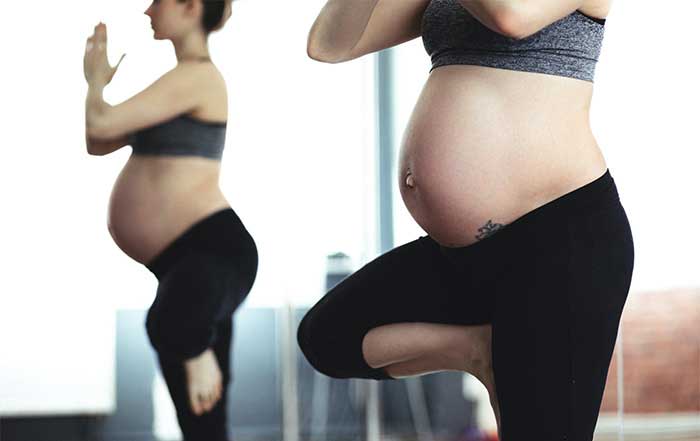Experts advise that having regular exercise during pregnancy comes with many benefits. It can improve a woman's health; it can reduce the risk of excessive weight gain; it can make delivery easier. Hence, regular exercise can have a positive impact on a pregnant woman's physical, mental and emotional health. Indeed, it may help the newborn have a healthy start in life. Interestingly, despite this, only 40% of pregnant women reportedly exercise. Many doctors recommend a minimum of 150 minutes a week of moderate exercise for pregnant women. Actually, experts advise that a pregnant woman should have what they call "moderate-intensity aerobic activity" during and after pregnancy.
A pregnant woman does not need to exercise for a long time. For example, they can exercise 5 times each week for 30 minutes. Alternatively, they can exercise 10 times a week for fifteen minutes. Were you already engaged in some form of rigorous activity (like running) before getting pregnant? You're advised to continue with this healthy regimen. Take some caution, though- do check with your doctor to give the green light. Pregnant women can do several forms of exercise to stay fit.
Certainly, those who exercise while pregnant can reduce the risk of having complications during childbirth. Some suitable activities that such women can adopt include swimming, prenatal yoga, brisk walking, and indoor cycling. Others engage in low-impact aerobics; they, however, do this under the capable guidance of a certified instructor. Many also do special exercises in preparation for labour and delivery. Happily, many of these activities carry minimal risk of injury. They also benefit the body. Further, they're safe to do well until a woman delivers.
Brisk walking: Those who had low levels of exercise before becoming pregnant are advised to try and take a quick stroll around the neighbourhood. This is a perfect way to start everything off. And there are several advantages to doing this. First, taking a brisk walk around the home provides a woman with a healthy cardiovascular workout. Such activity has relatively little impact on one's knees and ankles. It's pretty alright to start the exercise at home; after all, it's free. Indeed, it's often possible to walk anywhere at any time during pregnancy. You may even invite willing family members and friends to join you and make everything much more fun. You can always stay safe by wearing supportive footwear during such exercises; this prevents falls. Choose smooth surfaces, avoid rocks, potholes, and similar obstacles that can cause accidents.
Swimming: Many pregnant women have a healthy exercise regimen that involves swimming or walking in water. Some engage in aqua aerobics- this allows for motion without putting undue pressure on your joints. As the pregnancy progresses, many find that buoyancy offers relief from the ravages of extra body weight. It's crucial for those exercising to select a stroke that feels fairly comfortable; it shouldn't hurt your neck, back muscles, or shoulders. One great choice for this is breaststroke. Use a kickboard- it can help bolster the leg and buttock muscles.
Here are some safety tips: When entering the water, use the railing for balance- it helps avoid slipping. Also, avoid diving or jumping- this could affect the abdomen. Keep off warm pools, hot tubs, steam rooms, and saunas. This minimizes the risk of overheating.
Stationary cycling: Some cycle on a stationary bike (this is also known as spinning). It's ideal for most women in pregnancy- including those exercising for the first time. Some advantages of this include the following: Experts advise that cycling helps raise the woman's heart rate; it also minimizes undue stress on the woman's joints and pelvis. Further, this type of bike helps support your weight. Since it's stationary, there's little risk of falling. As the pregnancy progresses, however, you might find that a higher handlebar is much more comfortable.
Yoga: Studies show that prenatal yoga classes help many women to maintain flexibility and keep their joints limber. Yoga has also been found to help with stress management and pain. Here are other known benefits of yoga: It strengthens muscles, increases flexibility, enhances relaxation, stimulates blood circulation, and maintains healthy blood pressure. Yoga also teaches women techniques to stay calm during labour and delivery.
Some safety tips: With the pregnancy's progress, skip the following: poses that involve lying on the abdomen, lying flat on the back, or that can cause overbalancing.

